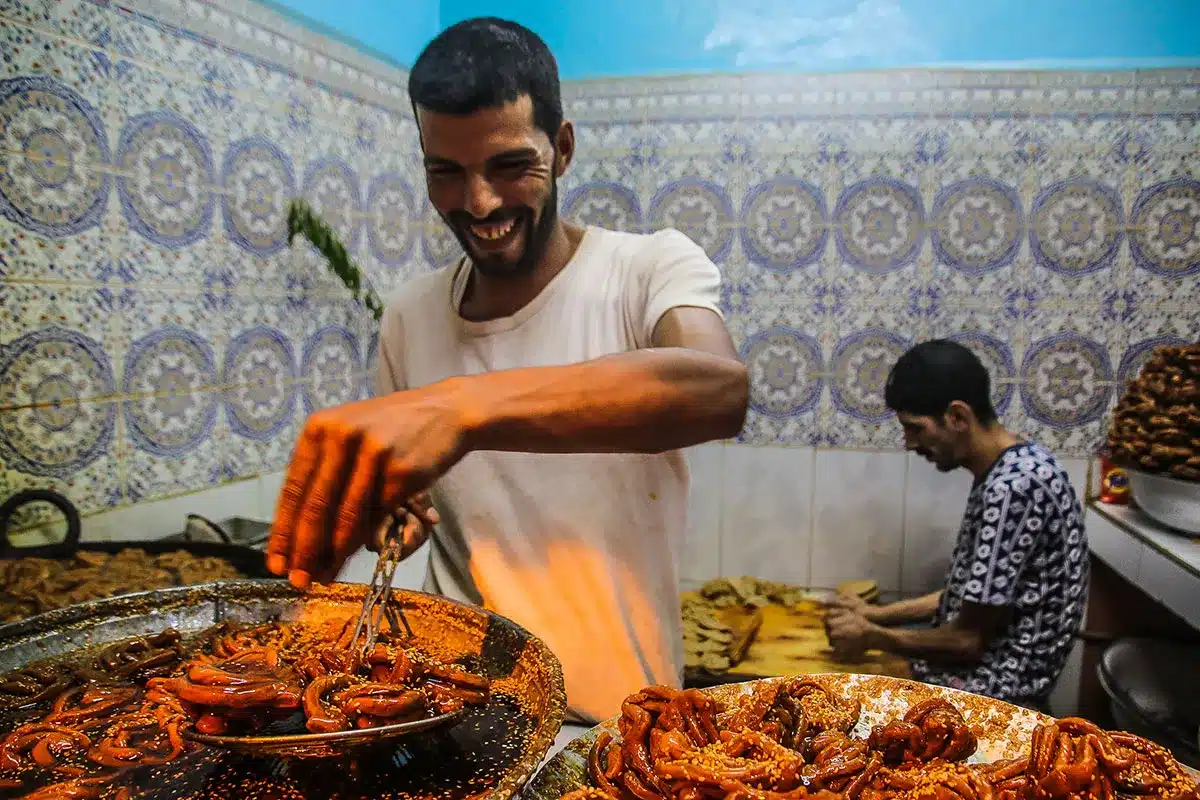Travel to Morocco in January: Weather, Tips, & things to do
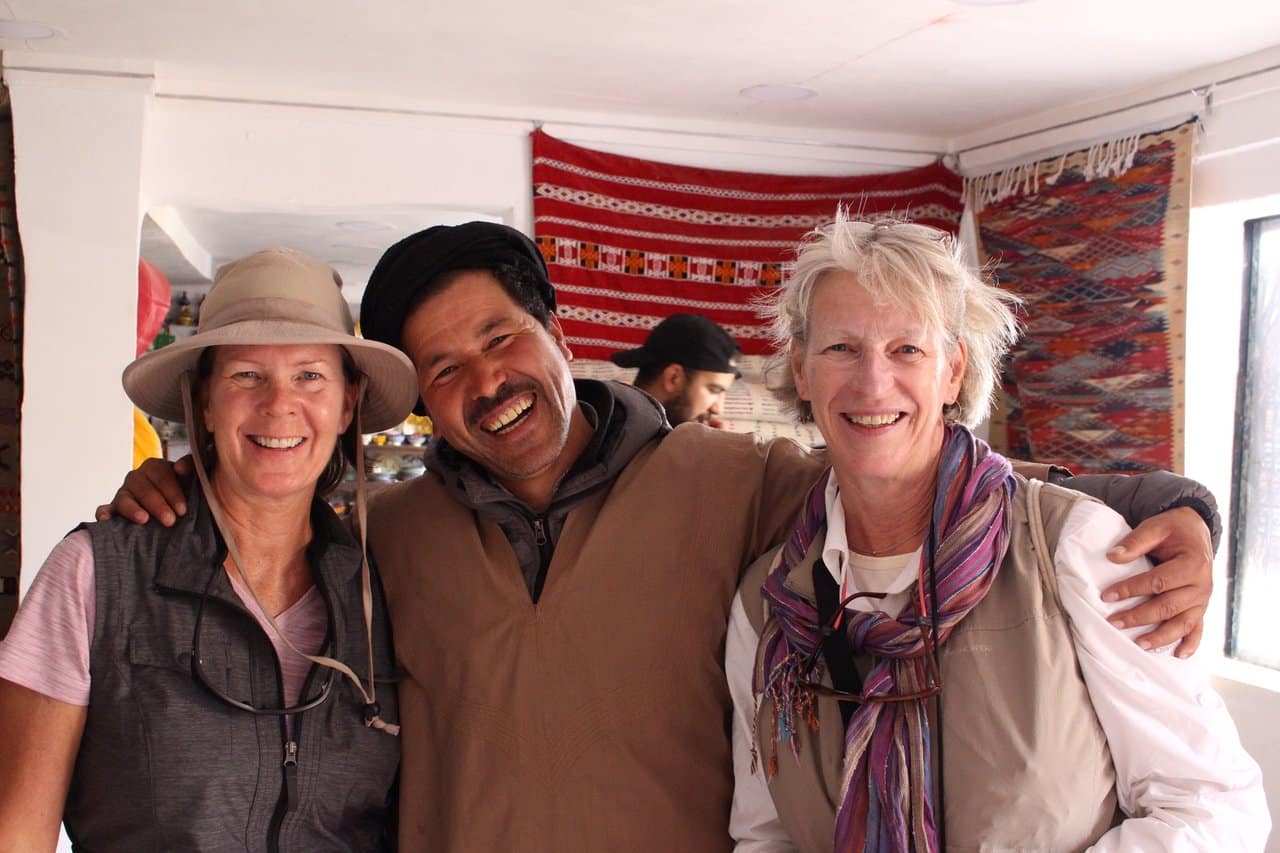
Visit Morocco in January and discover a quieter, more authentic side of the country. The winter months bring cooler temperatures, clear skies, and a peaceful atmosphere, making it the perfect time to explore without the summer crowds.
Morocco’s mild winter offers a refreshing escape for travelers looking to experience the country’s diverse landscapes at a relaxed pace. The cities feel more serene, the mountains are dusted with snow, and the desert provides crisp, starry nights.
1. Visit Morocco in January: Understanding the Weather in Morocco
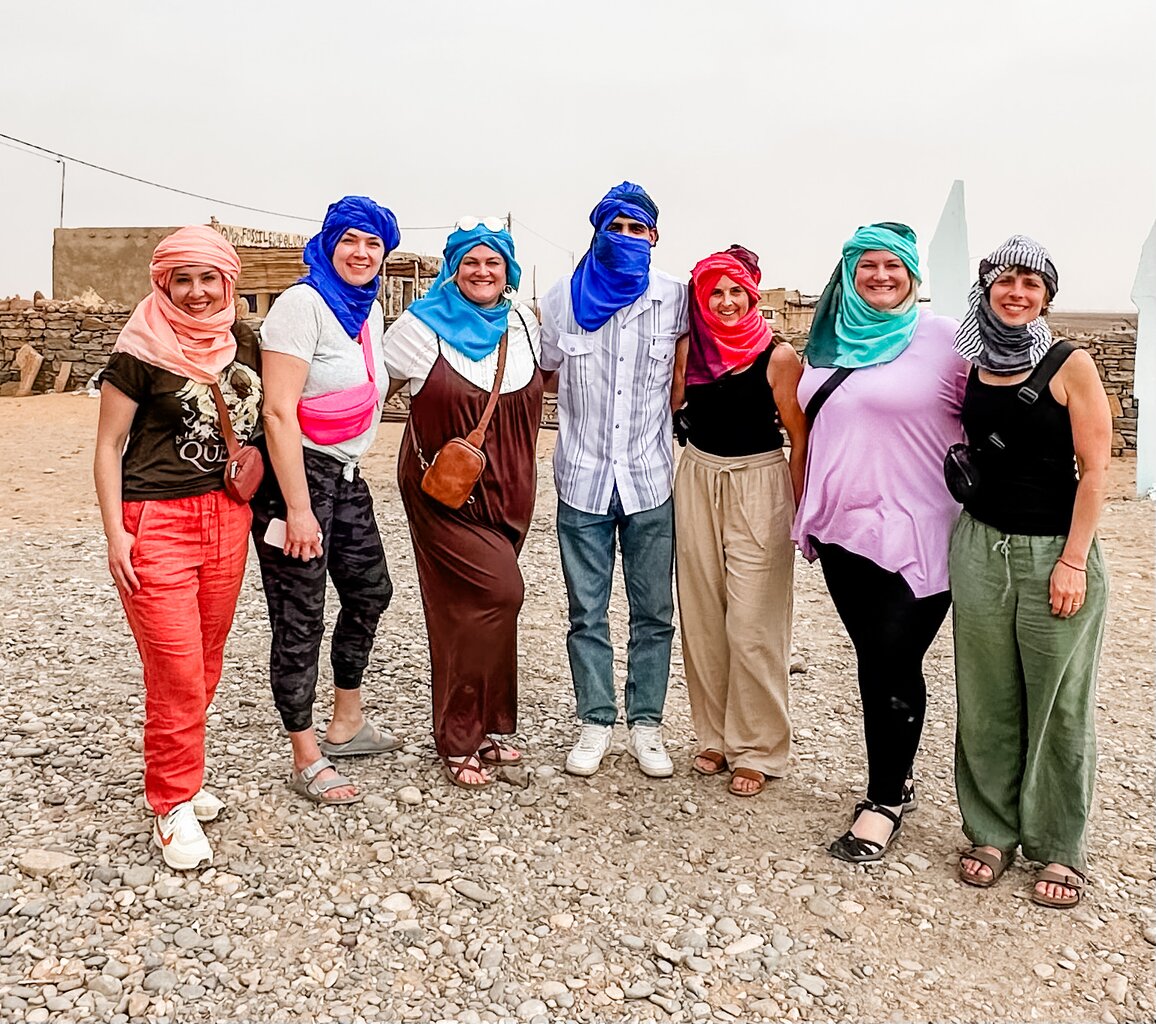
January is an interesting time to visit Morocco, as the climate is generally mild in most regions of the country. However, there are significant variations depending on geography and altitude.
In the northern regions, such as Tangier, daytime temperatures in January average around 15°C (59°F), with light rainfall and sunny days. Coastal cities like Casablanca and Rabat are slightly warmer, with average daytime temperatures of around 18°C (64°F), though they may experience more rainfall.
Inland cities like Marrakech and Fes see slightly higher daytime temperatures, reaching around 20°C (68°F). However, nights can be quite chilly, dropping to around 5°C (41°F) on average. Light rain is also possible in these areas.
In the southern regions, such as Ouarzazate and the Sahara, daytime temperatures can reach up to 25°C (77°F) in January, while nights remain cool. Rain is rare, making this an ideal destination for travelers seeking dry and warm conditions.
From a tourism perspective, January is considered a low season in Morocco, meaning accommodation and activity prices are often lower than in peak summer months. However, certain events and festivals in different regions may still attract visitors.
2. What to Wear When You Visit Morocco in January
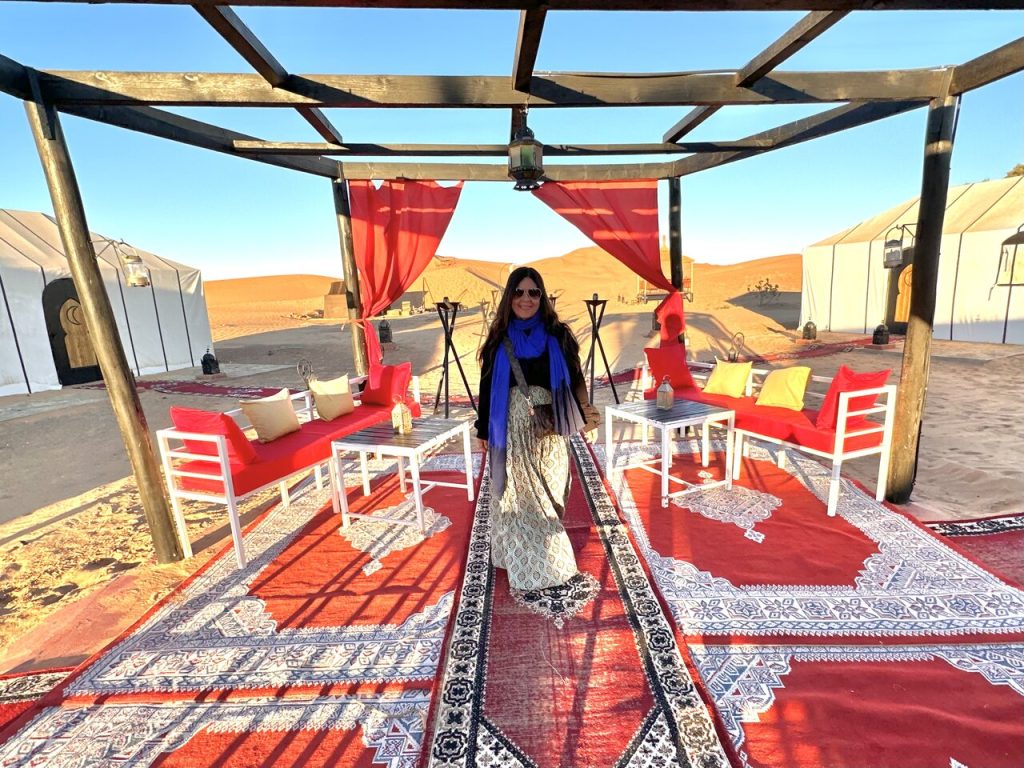
Layering is essential for staying comfortable in Morocco during January, as daytime temperatures are mild, but nights can get quite cold, especially in the mountains and desert. Light, breathable fabrics like cotton and linen work well during the day, while long-sleeved shirts provide both sun protection and cultural appropriateness.
As the sun sets, temperatures drop significantly, making warm layers a must. A cozy sweater, cardigan, or insulated jacket will keep you comfortable, particularly if you’re exploring higher altitudes or spending time outdoors in the evening. Wool or cashmere layers offer extra warmth without adding bulk. A scarf or shawl is also a smart addition—not only for warmth but also as a stylish and practical accessory when visiting religious or cultural sites.
Dressing for Different Regions in December
Morocco’s weather varies across different regions, so packing appropriately will help you stay comfortable throughout your trip.
- Atlas Mountains: Expect cold temperatures, particularly at night. If you’re visiting or planning a trek, bring warm layers, a thick jacket, and thermal clothing to stay cozy in the crisp mountain air.
- Coastal Cities (Essaouira, Agadir, Casablanca): The weather is mild, but coastal winds can make it feel cooler. A light windbreaker or a warm jacket is useful when exploring the seaside.
- Marrakech & Other Inland Cities: Days are still warm, but nights are noticeably cooler. A medium-weight jacket or stylish shawl is great for evenings out. If you’re dining in upscale restaurants or staying in elegant riads, consider packing a smart outfit such as a nice dress or a collared shirt with stylish shoes.
- Desert & Ouarzazate: While the days are pleasant, desert nights can be very cold. Pack warm layers, including a fleece or insulated jacket, if you plan to experience a desert camp or sunrise camel ride.
Comfortable walking shoes are a must, especially in cities with cobbled streets like Fes and Essaouira, or if you plan to explore Morocco’s natural landscapes.
3. Modesty and Cultural Etiquette When You Visit Morocco in January

Morocco is a predominantly Muslim country with conservative dress norms, especially in rural areas and religious sites. Respecting local customs ensures a more immersive and positive travel experience.
- For Women: It’s recommended to cover shoulders and knees by wearing long skirts, dresses, or loose-fitting pants paired with blouses or t-shirts. While Morocco is used to tourists, dressing modestly is appreciated, particularly in smaller towns.
- For Men: Avoid tank tops or shorts in conservative areas. Opt for lightweight trousers and shirts to stay both comfortable and respectful in public spaces.
Visiting Religious Sites in Morocco:
When entering mosques or other sacred places, dress appropriately. Women should cover their heads with a scarf, and men should wear long pants and shirts with sleeves. Carrying a pashmina or sarong is useful for quickly adjusting your outfit when needed.
Respecting Moroccan cultural norms doesn’t mean sacrificing comfort—with the right balance, you can dress both practically and respectfully while exploring the country.
4. Visit Morocco in January: Best things to do
January in Morocco offers a peaceful and refreshing escape, with crisp winter air, fewer crowds, and diverse landscapes to explore. The cooler temperatures create the perfect atmosphere for discovering the country’s rich culture, from wandering through ancient medinas to experiencing the warmth of Berber hospitality in mountain villages. Without the intense summer heat, exploring Fes and Marrakech becomes a more relaxed experience, where you can meander through colorful souks, admire intricate tilework, and unwind in hidden riads with a steaming glass of mint tea.
The Sahara Desert in January is calm and inviting, with comfortable days for camel trekking and clear, starry nights ideal for sitting around a campfire in a traditional desert camp. Meanwhile, the High Atlas Mountains transform into a winter wonderland, with snow-covered peaks offering breathtaking views and opportunities for scenic hikes or even skiing in Oukaïmeden, Morocco’s highest ski resort.
Along the Atlantic coast, Essaouira and Agadir provide a refreshing mix of mild weather, fresh seafood, and coastal charm. Dakhla remains a top destination for kitesurfing enthusiasts, while nature lovers can explore the vast dunes and untouched beaches. Inland, visiting the historic kasbahs of Ouarzazate or the palm groves of Skoura allows for an off-the-beaten-path adventure.
For a more immersive experience, January is an excellent time to visit local markets, learn traditional Moroccan cooking, or unwind in a hammam after a day of exploration. The slower pace of travel in winter, combined with Morocco’s warm hospitality, makes this month a truly special time to visit.
5.Visit Morocco in January: Best Family-Friendly Activities

Morocco in January offers families a perfect blend of adventure, culture, and nature in a relaxed and comfortable setting. The cooler temperatures make exploring much easier, whether wandering through vibrant cities, discovering scenic landscapes, or diving into hands-on cultural experiences.
In Marrakech, families can stroll through the Majorelle Garden and the Secret Garden, where kids will love the bright colors, exotic plants, and peaceful atmosphere. Just outside the city, the Agafay Desert provides a perfect alternative to the Sahara, offering camel rides and breathtaking sunsets over its rolling rocky dunes. For those who enjoy nature, a day trip to the Ourika Valley is a great way to experience Morocco’s lush side, with gentle hiking trails, waterfalls, and small Berber villages to explore. In Tangier, the legendary Caves of Hercules provide a fascinating mix of history and stunning ocean views, making it a fun stop for both kids and adults.
For a more immersive experience, Fes offers pottery and calligraphy workshops, allowing families to learn traditional Moroccan arts in a hands-on way. In the Skoura Palm Grove, children can enjoy a gentle donkey ride through the oasis, a peaceful and authentic way to take in the scenery. Meanwhile, in Erfoud, fossil hunting offers a unique adventure where families can explore prehistoric sites or visit a local museum to see Morocco’s fascinating geological treasures.
6. Visit Morocco in January – How to Avoid Crowds & Enjoy a Relaxed Trip

January is one of the best times to visit Morocco, with cooler weather, beautiful landscapes, and fewer tourists compared to the peak summer months. While it’s not as crowded as spring, some popular destinations can still get busy, especially on weekends. Here are a few simple ways to enjoy a more relaxed trip while avoiding crowds.
1. Choose Less-Touristy Cities & Hidden Gems
Instead of sticking to Marrakech and Fes, explore Morocco’s lesser-known gems. Taroudant, known as “Little Marrakech,” has beautiful souks and fewer tourists. Tafraoute in the Anti-Atlas Mountains offers stunning landscapes and Berber culture without the crowds. Coastal towns like Mirleft and Oualidia provide a peaceful beach escape.
2. Visit Popular Places at Off-Peak Hours
If you’re set on visiting famous spots like Jemaa el-Fnaa in Marrakech or Chefchaouen’s blue streets, go early in the morning or late in the afternoon. The light is better for photos, and you’ll avoid the midday rush. Markets and souks are busiest around midday, so exploring in the morning gives you a calmer experience.
3. Explore the Countryside & Villages
October is a great time for day trips to places that many travelers skip. Visit the Aït Bouguemez Valley, known as the “Happy Valley,” for stunning mountain scenery and traditional Berber life. Take a walk through the Fint Oasis near Ouarzazate, where palm groves and mud-brick villages feel untouched by time.
4. Enjoy Outdoor Activities in Quiet Places
Instead of the crowded Sahara dunes in Merzouga, try the Erg Chigaga dunes for a more remote desert experience. If you love hiking, the Middle Atlas Mountains offer breathtaking trails without the high foot traffic of the High Atlas. The Dades and Todra Gorges are also stunning and far less crowded than Marrakech.
5. Book Riads & Hotels Away from Tourist Centers
For a peaceful stay, choose a riad or guesthouse in a quieter neighborhood rather than right in the heart of the medina. In Marrakech, for example, staying in Kasbah or Palmeraie gives you more space and tranquility while still being close to the action.
6. Visit Museums & Palaces in the Afternoon
Most travelers visit cultural sites in the morning, so go in the late afternoon for a quieter experience. The Bahia Palace, El Badi Palace, and the Saadian Tombs in Marrakech are much more enjoyable when they’re not packed with tour groups.
7. Take the Scenic Route
Skip highways and explore Morocco by scenic coastal or mountain routes. A road trip along the Atlantic Coast from Essaouira to Mirleft offers breathtaking ocean views with small, charming villages along the way. The drive from Marrakech to Ouarzazate via the Tizi n’Test Pass is quieter than the usual Tizi n’Tichka route and equally stunning.
7. Dressing Modestly in Morocco

Morocco is a predominantly Muslim country where conservative dress is the norm, especially in rural areas and religious sites. Modesty is important for both men and women. Women should aim to cover their shoulders and knees, opting for long skirts, dresses, or loose-fitting pants paired with blouses or t-shirts. Men should avoid wearing tank tops or shorts in public, particularly in more traditional regions.
When visiting religious sites such as mosques, dressing respectfully is essential. Women should cover their heads with a scarf, while men should wear long pants and shirts with sleeves. A lightweight scarf or pashmina can be useful for quickly adjusting your outfit when needed.
Clothing for Men in Morocco in January
For men, dressing modestly is just as important, though expectations are generally less strict than for women. Long pants and shirts with sleeves are ideal for maintaining a respectful appearance. Lightweight fabrics like cotton work well for daytime warmth, while a sweater or light jacket will keep you comfortable in cooler evenings. Tank tops are best avoided as they are not considered appropriate in public spaces.
If dining at upscale restaurants or visiting modern neighborhoods in cities like Marrakech, men can wear a collared shirt with well-fitted trousers for a polished look. Jeans and t-shirts are acceptable for casual outings as long as they are neat and undamaged. When traveling to rural areas, dressing more conservatively is recommended to align with local customs.
Clothing for Women in Morocco in January
Layering is key to staying comfortable throughout the day. Lightweight cotton tops and dresses are great for daytime activities, but it’s wise to carry a sweater or jacket for the cooler evenings. A scarf or shawl is a must-have accessory—it provides sun and wind protection while adding a stylish touch to your outfit.
When visiting mosques or religious sites, make sure to cover your shoulders, arms, and legs. A pashmina can also be used to cover your head when required. Avoid wearing revealing clothing like short skirts, shorts, or tank tops, as they can attract unwanted attention. Instead, choose comfortable and modest outfits such as long dresses, ankle-length skirts, or loose-fitting pants. These not only respect local customs but also offer practical protection from the sun. Simple jewelry can enhance your outfit without being too flashy.
9. Traveling Sustainably in Morocco
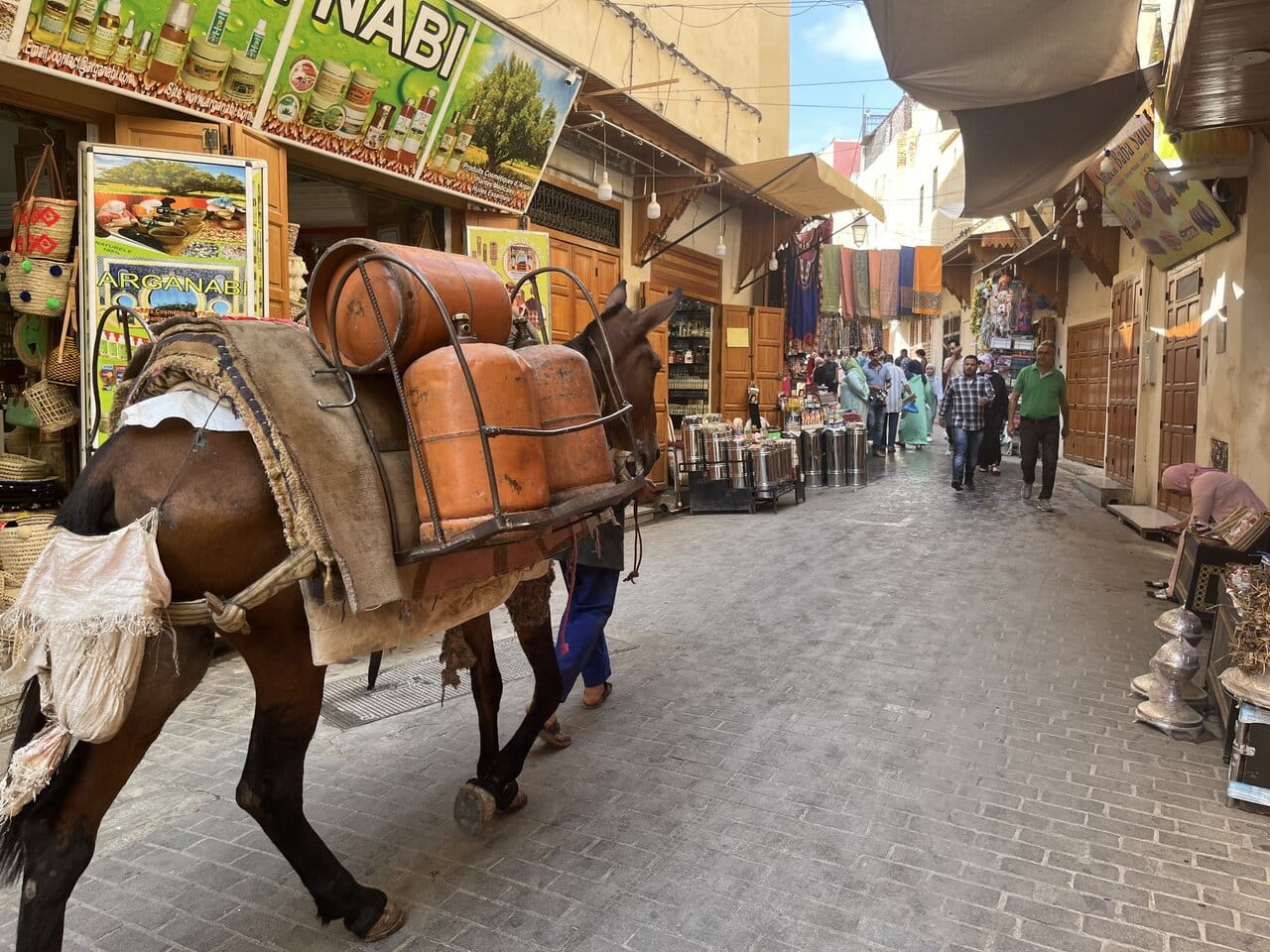
Visiting Morocco in January is a wonderful opportunity to explore the country while making mindful choices that benefit the environment, local communities, and cultural heritage. Sustainable travel is about respecting traditions, reducing waste, and supporting responsible tourism initiatives. Here’s how you can make a positive impact while enjoying your journey.
1. Choose Eco-Friendly Accommodations
Opt for eco-lodges, riads, or guesthouses that focus on sustainability. Many accommodations in Morocco are taking steps to reduce water and energy consumption, source local ingredients, and support the local economy.
- Look for eco-certified hotels or traditional riads that use solar energy.
- Stay in rural guesthouses that support local families and communities.
- Avoid large resorts that consume excessive resources, especially in dry regions.
2. Support Local Communities
September is a great time to explore Morocco’s countryside and smaller towns, where tourism directly benefits local communities. Instead of staying in big-chain hotels, support locally-owned businesses by:
- Booking tours with local guides rather than large tour companies.
- Shopping at local markets instead of touristy souvenir shops.
- Eating at family-run restaurants that use fresh, seasonal ingredients.
3. Reduce Plastic Waste
Plastic waste is a growing issue in Morocco, especially in tourist-heavy areas. You can help by reducing your plastic footprint:
- Bring a refillable water bottle—many hotels and cafés offer filtered water.
- Use reusable shopping bags instead of plastic ones at souks and markets.
- Say no to plastic straws and unnecessary packaging when ordering food.
4. Respect Natural Environments
Whether you’re visiting Morocco’s beaches, mountains, or desert, be mindful of your impact on the environment.
- Stick to marked trails when hiking to prevent soil erosion.
- Avoid littering—carry your trash with you if bins aren’t available.
- Don’t disturb wildlife or buy products made from endangered species.
5. Use Public or Sustainable Transport
Instead of relying on private cars, opt for eco-friendly transportation whenever possible:
- Take the train between major cities—it’s a comfortable and low-impact way to travel.
- Use local buses or shared taxis to reach smaller towns.
- Walk or cycle in pedestrian-friendly areas like Chefchaouen and Essaouira.
6. Be Mindful of Water Consumption
September is a dry month in Morocco, and water shortages are common in many regions. Reduce your water usage by:
- Taking shorter showers and reusing towels at hotels.
- Avoiding excessive laundry requests in accommodations.
- Not wasting drinking water—only take what you need.
7. Travel Off the Beaten Path
Instead of visiting only the most touristy areas, explore lesser-known places to help distribute tourism more evenly.
- Consider smaller mountain villages instead of just Imlil.
- Visit less crowded beaches instead of only staying in Agadir.
- Stay in hidden oasis valleys to support rural communities.
8. Give Back in a Meaningful Way
Instead of giving money to child beggars or unregulated charities, support established organizations that promote long-term community development.
- Donate to local NGOs that focus on education, healthcare, or environmental conservation.
- Buy from fair-trade cooperatives that empower local artisans.
- Volunteer responsibly—look for ethical programs that truly benefit locals.
Visit Morocco in January for a Peaceful and Authentic Experience
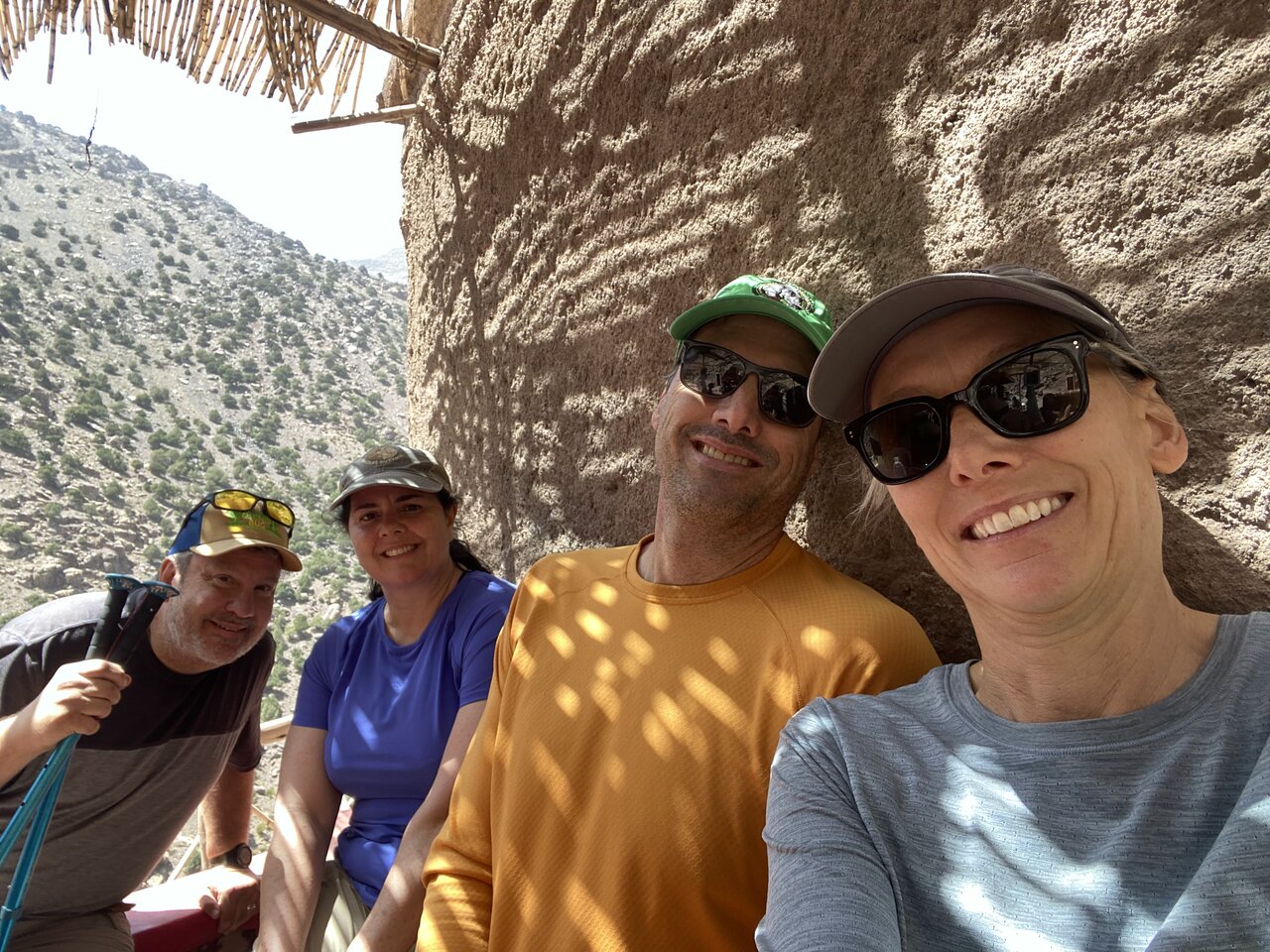
January is a great time to visit Morocco, offering crisp winter air, fewer crowds, and a peaceful atmosphere perfect for exploring at a relaxed pace. The cooler temperatures make wandering through the medinas of Marrakech and Fes more comfortable, while the desert remains mild during the day, with chilly but magical nights under a sky full of stars.
Across the country, the landscapes take on a new charm. The snow-covered peaks of the High Atlas provide stunning backdrops for scenic hikes and cozy stays in Berber villages, while the coastal towns remain inviting with their fresh seafood, ocean breezes, and laid-back ambiance. The slower pace of January allows for a more immersive experience, whether sipping mint tea in a quiet riad, discovering centuries-old kasbahs, or taking a peaceful camel ride through the desert.
For an unforgettable Moroccan journey that blends culture, adventure, and relaxation, January offers the perfect balance. Take the time to explore Morocco at its best and create memories beyond the usual tourist trail.



